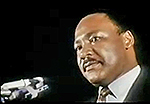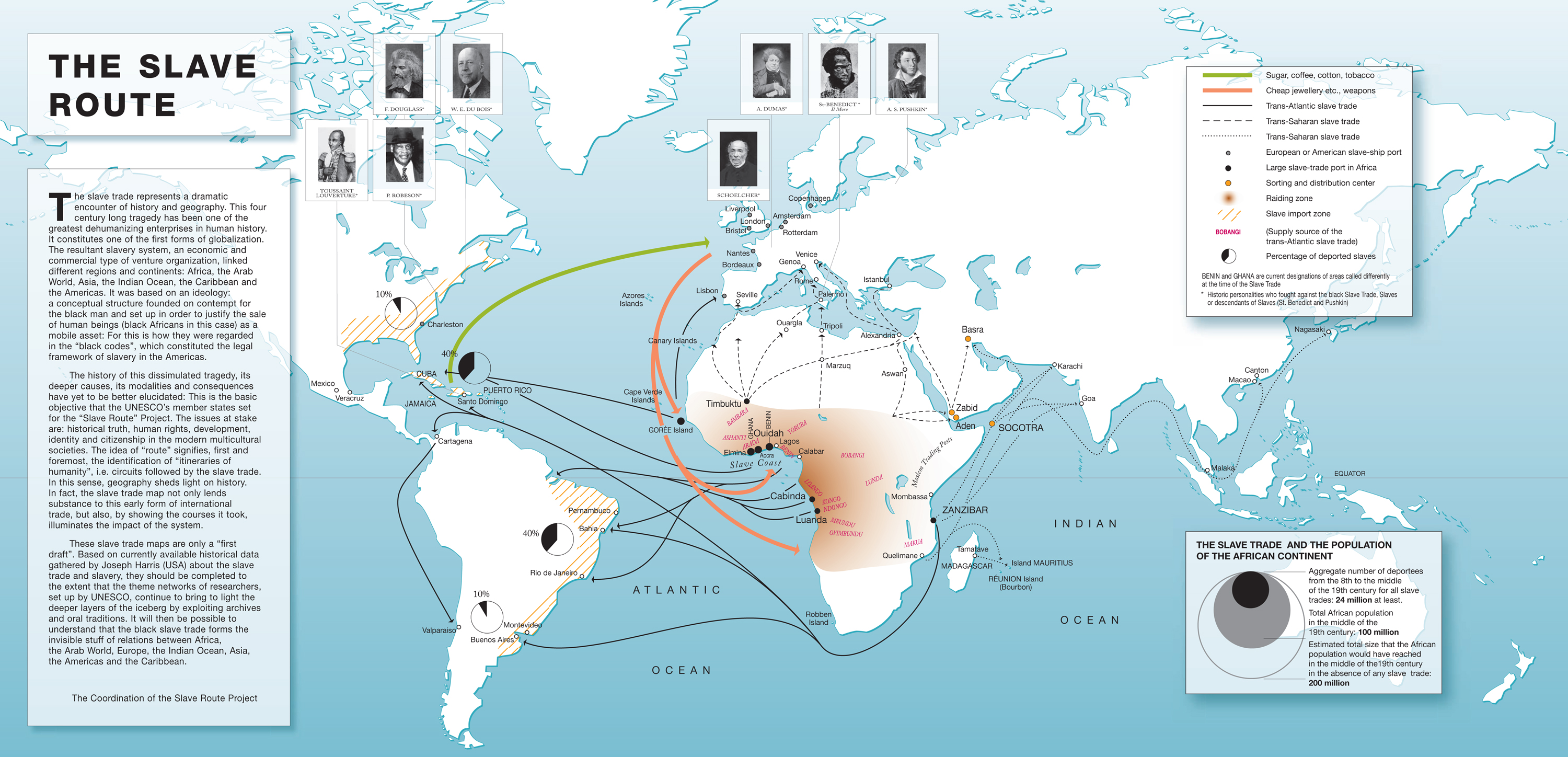- Slave Routes, Deportees
-
Bambara
-
Ashanti
-
Arada
-
Benin
-
Yoruba
-
Bobangi
-
Loango
-
Kongo
-
Ndongo
-
Mbundu
-
Ovimbundu
-
Lunda
-
Makua
-
Slave Coast
The
slave trade represents a dramatic encounter of history and
geography. This four century long tragedy has been one of the
greatest
dehumanizing enterprises in human history. It constitutes one of
the first forms of globalization. The resultant slavery system,
an economic
and commercial type of venture organization, linked different
regions and continents: Africa, the Arab World, Asia, the Indian
Ocean,
the Caribbean and the Americas. It was based on an ideology: a
conceptual structure founded on contempt for the black man and
set
up in order to justify the sale of human beings (black Africans
in this case) as a mobile asset. For this is how they were
regarded in the
"black codes", which constituted the legal framework of slavery
in the Americas.
The history of this dissimulated tragedy, its deeper causes, its
modalities and consequences have yet to be better elucidated.
This is
the basic objective that the UNESCO's member states set for the
"Slave Route" Project. The issues at stake are: historical
truth, human
rights, development, identity and citizenship in the modern
multicultural societies. The idea of "route" signifies, first
and foremost, the
identification of "itineraries of humanity", i.e. circuits
followed by the slave trade. In this sense, geography sheds
light on history. In fact,
the slave trade map not only lends substance to this early form
of international trade, but also, by showing the courses it
took, illuminates
the impact of the system.
These slave trade maps are only a first draft. Based on
currently available historical data gathered by Joseph Harris
(USA) about the slave
trade and slavery, they should be completed to the extent that
the theme networks of researchers, set up by UNESCO, continue to
bring
to light the deeper layers of the iceberg by exploiting archives
and oral traditions. It will then be possible to understand that
the black
slave trade forms the invisible stuff of relations between
Africa, the Arab World, Europe, the Indian Ocean, Asia, the
Americas and the
Caribbean.
The Coordination of the
Slave Route Project
-
Sugar, coffee, cotton, tobacco
-
Cheap jewellery etc., weapons
-
Trans-Atlantic slave trade
-
Trans-Saharan slave trade
-
Trans-[Indian Oceanic] slave trade
-
European or American slave-ship port
-
Large slave-trade port in Africa
-
Sorting and distribution center
-
Raiding zone
-
Slave import zone
-
Supply source of the trans-Atlantic slave trade
-
Percentage of deported slaves
-
BENIN and GHANA are current designations of areas called
differently at the time of the slave trade.
* =
Historic personalities who fought against the black slave trade,
slaves or descendants of slaves:
Toussaint Louverture (or
L'Ouverture, François Dominique Toussaint 1743-1803)
Frederick Douglass
(Frederick Augustus Washington Bailey 1818-1895)
Paul Robeson (Paul Bustill
Robeson 1898-1976)
W.E.B. Du Bois (William
Edward Burghardt Du Bois 1868-1963)
Victor Schoelcher
(1804-1893)
Alexandre Dumas (Sr. or
père [father] 1802-1870)
St. Benedict the Black (Il
Moro 1526-1589)
Aleksandr Sergeyevich Pushkin
(1799-1837)
The Slave Trade and the Population of the African Continent
- Aggregate number of deportees from the 8th to the middle of
the 19th century for all slave trades: 24 million at least.
- Total African population in the middle of the 19th century:
100 million.
- Estimated total size that the African population would have
reached in the middle of the 19th century in the absence of any
slave trade: 200 million.




